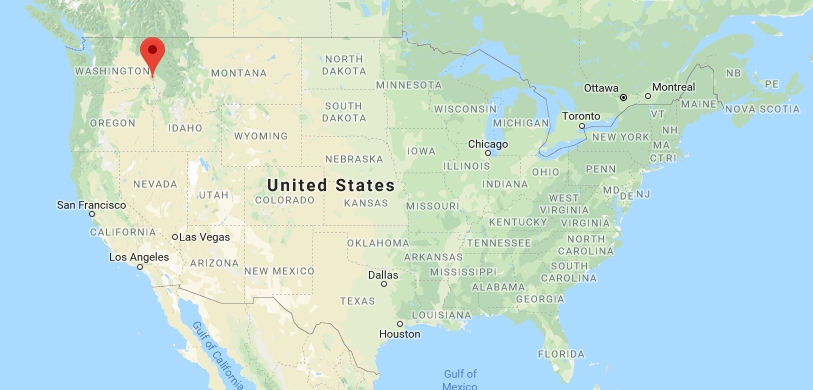
ASN Wikibase Occurrence # 205207
This information is added by users of ASN. Neither ASN nor the Flight Safety Foundation are responsible for the completeness or correctness of this information.
If you feel this information is incomplete or incorrect, you can submit corrected information.
| Date: | Saturday 27 January 2018 |
| Time: | 15:34 |
| Type: |  Hughes 369D |
| Owner/operator: | Hells Canyon Helicopters |
| Registration: | N369TH |
| MSN: | 1000830D |
| Year of manufacture: | 1980 |
| Total airframe hrs: | 11793 hours |
| Engine model: | Rolls-Royce 250-C20B |
| Fatalities: | Fatalities: 1 / Occupants: 3 |
| Aircraft damage: | Substantial |
| Category: | Accident |
| Location: | Garfield County, 30 mi W of Clarkston, WA -
 United States of America United States of America
|
| Phase: | Manoeuvring (airshow, firefighting, ag.ops.) |
| Nature: | Agricultural |
| Departure airport: | Gould City, WA |
| Gould City, WA | |
| Investigating agency: | NTSB |
| Confidence Rating: |
The purpose of the wildlife capture flight was to catch and collar mule deer for tracking. The flight was operated with three crewmembers: a pilot, a gunner, and a mugger. The pilot sits in the front left seat, the gunner sits in the rear left seat and shoots nets from a net gun in order to capture deer, and the mugger sits in the front right seat and exits the helicopter to handle the tagging and release of the deer.
During a refueling stop after about 2 hours of flight, the pilot mentioned to the biologist that it was quite windy. The helicopter then departed; data from an onboard GPS unit showed the helicopter flying northeast through the ravine before reversing course and proceeding southwest through the ravine when the flight track ended in the vicinity of the accident site.
Examination of the site revealed two nets slightly northeast of the main wreckage. One net was mostly closed at the bottom of the ravine, with one weight extended farther than the others. This weight exhibited damage inconsistent with the other weights and was missing its rubber ring. Metallurgical examination of the weight revealed aluminum transfer marks. Another net that was partially open was located about 6 ft north of the first net and slightly up the western ravine wall. A piece of tail rotor skin was found about 5 ft farther north.
At the time of the accident, nearby airports were reporting wind gusts between 23 and 35 knots. A High Resolution Rapid Refresh model over the accident site identified strong low-level winds, with a maximum wind 1,000 ft above the surface from 230° at 48 knots. AIRMET Tango for low-level wind shear and turbulence due to strong winds was current for the area of the accident site at the time of the accident.
Postaccident examination did not reveal any anomalies with the engine that would have precluded normal operation. The tail rotor hub and stop exhibited contact marks and dents consistent with excessive tail rotor blade flapping. The tail rotor blades remained attached at the hub. One blade appeared undamaged, and the outboard 2 inches of the second blade had a dent with gouge marks with evidence of metal transfer consistent with stainless steel, similar to that of the net weight; the remaining section of the blade was bent and curled. One side of the tail rotor skin was fracture-separated.
Based on the marks on the tail rotor blade and on the net weight, it is likely that the net weight struck the leading edge of the tail rotor, which resulted in a fracture of the tail rotor tip and subsequent imbalance of the tail rotor blades. This imbalance resulted in excessive tail rotor blade flapping and subsequent loss of control. Despite two net guns being present in the helicopter, the angle the net weight impacted the tail rotor is consistent with the net originating from the left side of the helicopter. In addition, since there are several accounts of windy conditions it is potential that the wind affected the nets ability to open and possibly the net trajectory.
Probable Cause: A loss of control following the gunner's failure to ensure that the net maintained clearance from the tail rotor.
Accident investigation:
 |
|
Sources:
NTSB
FAA register: http://registry.faa.gov/aircraftinquiry/NNum_Results.aspx?NNumbertxt=369TH
http://aerossurance.com/helicopters/wildlife-netting-accidents/
Location
Images:

Revision history:
| Date/time | Contributor | Updates |
|---|---|---|
| 28-Jan-2018 11:01 | gerard57 | Added |
| 28-Jan-2018 12:21 | Aerossurance | Updated [Time, Operator, Location, Nature, Narrative] |
| 28-Jan-2018 19:30 | Iceman 29 | Updated [Source, Narrative] |
| 29-Jan-2018 00:03 | Geno | Updated [Registration, Cn, Operator, Location, Phase, Nature, Source, Narrative] |
| 29-Jan-2018 09:15 | Iceman 29 | Updated [Source, Embed code] |
| 29-Jan-2018 09:22 | Iceman 29 | Updated [Photo, ] |
| 29-Jan-2018 09:28 | Iceman 29 | Updated [Operator] |
| 29-Jan-2018 09:30 | Iceman 29 | Updated [Operator] |
| 11-Jul-2019 14:04 | Aerossurance | Updated [Operator, Nature, Departure airport, Destination airport, Source, Narrative] |
| 11-Jul-2019 14:35 | Aerossurance | Updated [Embed code] |
| 15-Jul-2019 18:07 | ASN Update Bot | Updated [Time, Operator, Nature, Source, Embed code, Damage, Narrative, Accident report, ] |
| 27-Jan-2021 07:58 | Aerossurance | Updated [Source, Embed code, Narrative, Accident report] |
| 07-Aug-2023 14:03 | harro | Updated [[Source, Embed code, Narrative, Accident report]] |
Corrections or additions? ... Edit this accident description
The Aviation Safety Network is an exclusive service provided by:


 ©2024 Flight Safety Foundation
©2024 Flight Safety Foundation